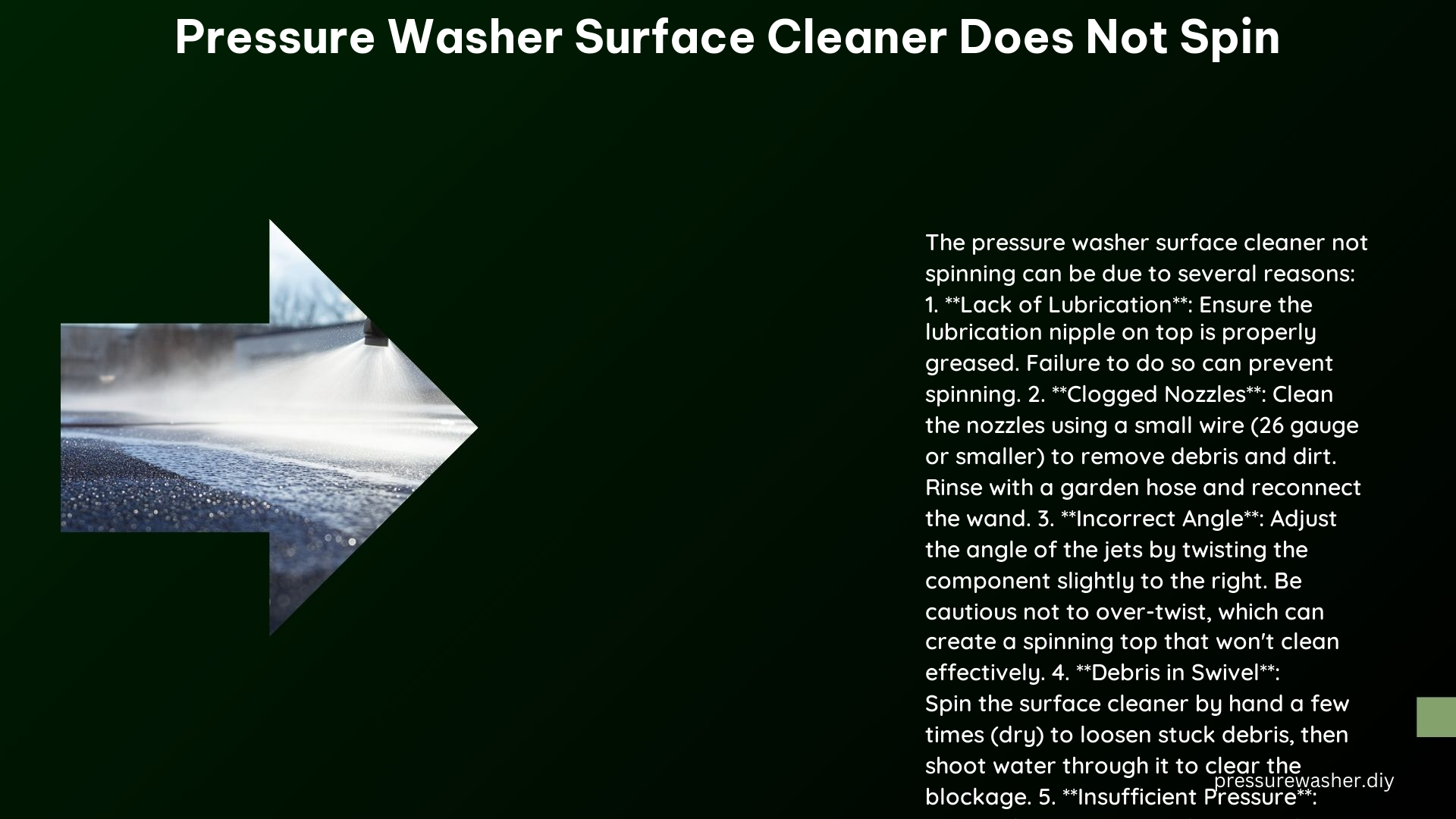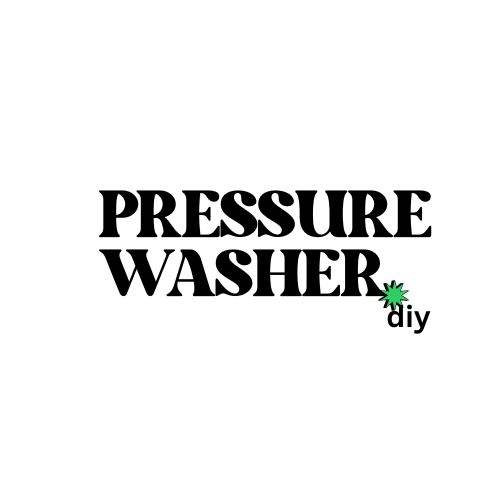If your pressure washer surface cleaner has stopped spinning, it can be a frustrating experience, but there are several common causes and troubleshooting steps you can take to fix the issue. This comprehensive guide will provide you with the technical details and specific steps to get your surface cleaner back in working order.
Common Causes of a Non-Spinning Surface Cleaner
1. Clogged Nozzles
One of the most common reasons for a surface cleaner not spinning is clogged nozzles. Dirt, debris, or mineral deposits can accumulate in the nozzles, preventing the surface cleaner from spinning effectively. The nozzles on a typical surface cleaner are small, with an orifice size of around 2.0, making them susceptible to clogging.
To resolve this issue, you’ll need to clean the nozzles using a small wire or a welding torch cleaner. Be sure to thoroughly clean each nozzle, removing any visible debris or deposits. If the nozzles are severely clogged, you may need to soak them in a cleaning solution or replace them altogether.
2. Insufficient Lubrication
Proper lubrication is essential for the smooth operation of the surface cleaner’s moving parts, particularly the swivel. Failure to lubricate the swivel or other moving components can cause the surface cleaner to seize or not spin properly.
To address this problem, apply a high-quality grease or lubricant to the swivel and any other moving parts as specified by the manufacturer. Be sure to use a lubricant that is compatible with the materials used in your surface cleaner.
3. Incorrect Angle of Jets
The angle of the jets on the surface cleaner plays a crucial role in its spinning mechanism. If the jets are not angled correctly, the surface cleaner may not spin as intended.
Adjust the angle of the jets to ensure they are directed at the appropriate angle, typically around 15-20 degrees from the horizontal. This will help create the necessary rotational force to spin the surface cleaner effectively.
4. Debris in the Swivel
Debris or dirt accumulation in the swivel can also prevent the surface cleaner from spinning. The swivel is responsible for allowing the surface cleaner to rotate, and any obstruction in this component can hinder its movement.
Inspect the swivel for any visible debris or dirt, and clean it thoroughly. If the swivel is severely compromised, you may need to replace it to restore proper spinning action.
5. Inadequate Pressure or Flow
If the pressure washer does not provide the recommended pressure or flow rate for the surface cleaner, it may not generate enough rotational force to make the surface cleaner spin.
Ensure that your pressure washer meets the minimum specifications for the surface cleaner, which typically include a minimum of 3 GPM (gallons per minute) and 3500 PSI (pounds per square inch). Consult the manufacturer’s recommendations to ensure your pressure washer is compatible with the surface cleaner.
Troubleshooting Steps

- Check Nozzles: Clean the nozzles using a small wire or a welding torch cleaner to remove any debris or mineral deposits.
- Lubricate Moving Parts: Apply a high-quality grease or lubricant to the swivel and other moving parts to ensure proper lubrication.
- Adjust Jet Angle: Adjust the angle of the jets to ensure they are directed at the appropriate angle, typically around 15-20 degrees from the horizontal.
- Inspect and Clean the Swivel: Check the swivel for any debris or dirt and clean it thoroughly. If necessary, replace the swivel.
- Verify Pressure Washer Specifications: Ensure that your pressure washer meets the recommended pressure and flow rate specifications for the surface cleaner, typically a minimum of 3 GPM and 3500 PSI.
Technical Specifications
Pressure Washer Requirements
To ensure optimal performance of your surface cleaner, your pressure washer should meet the following minimum specifications:
- Pressure: 3500 PSI (pounds per square inch)
- Flow Rate: 3 GPM (gallons per minute)
These specifications are typical for most surface cleaners, but it’s important to consult the manufacturer’s recommendations for your specific model to ensure compatibility.
Nozzle Size and Angle
The size and angle of the nozzles on your surface cleaner are also crucial factors in its spinning performance. Typically, nozzles with a 2.0 orifice size are suitable for small pressure washers, as they provide the necessary flow rate and pressure to spin the surface cleaner effectively.
The angle of the jets should be set to around 15-20 degrees from the horizontal to create the optimal rotational force for the surface cleaner.
Reference Links
- Surface Cleaner Not Spinning – Community Discussion
- How to Clean Surface Scrubber Nozzles – Video
- How to Clean 15″ Surface Scrubber Nozzles – Article
- Troubleshooting a Non-Spinning Surface Cleaner – Video
- Surface Cleaner Not Spinning – Reddit Discussion
By following the common causes and troubleshooting steps outlined in this comprehensive guide, you should be able to resolve the issue of your pressure washer surface cleaner not spinning. Remember to always consult the manufacturer’s instructions and safety guidelines when working on your pressure washer equipment.
